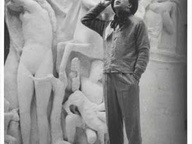Summer Wheat. KissandTell

Summer Wheat, Lovers, 2023. Acrylic paint and gouache on aluminum mesh, 238.8 x 172.7 cm.
Dal 9 June 2023 al 14 July 2023
Milano
Luogo: Fondazione Mudima
Indirizzo: Via Tadino 26
Orari: al lunedì al venerdì 11-13 / 15-19
Costo del biglietto: ingresso gratuito
Telefono per informazioni: +39 02.29409633
E-Mail info: info@mudima.net
Sito ufficiale: http://www.mudima.net
La Fondazione Mudima di Milano presenta dal 9 giugno al 14 luglio 2023 “Kiss and Tell”, la prima personale italiana dell’artista statunitense Summer Wheat (1977, USA).
Le dodici opere tattili esposte in mostra, tutte di grandi dimensioni e in parte inedite, sono realizzate con una tecnica completamente nuova creata dall’artista che si colloca all’intersezione tra pittura, disegno e scultura, belle arti e artigianato.
Nota per i suoi dipinti dai colori vibranti e per le installazioni avvolgenti, Wheat rappresenta la storia dell’Uomo, nelle sue esperienze individuali e collettive e nelle diverse manifestazioni dell’esistenza – come il lavoro, il tempo libero, le relazioni, la politica – attingendo a una molteplicità di fonti: le tradizioni artistiche dei nativi americani, l’arte antica e gli arazzi medievali, le incisioni rinascimentali e le astrazioni moderniste. Nelle sue vedute, ciascuno, indipendentemente dallo status sociale, occupa uno spazio uguale e condiviso che unito a uno spiccato senso dell’umorismo sovverte le strutture gerarchiche convenzionali e gli stereotipi con l’obiettivo di mettere in primo piano le figure femminili e rimetterne a fuoco le storie.
Il nucleo di opere esposto alla Fondazione Mudima è il frutto di un processo che utilizza la pittura come materiale plastico simile all’argilla. Wheat, infatti, dipinge il supporto dal retro, premendo il colore acrilico attraverso sottili fogli di rete di alluminio nei quali la pittura trapassa e si rapprende in una superficie strutturata che la rende simile a un arazzo. Ruolo fondamentale è affidato all’uso espressivo del colore e all’originale metodo di costruzione del dipinto che integra vari strumenti, dalle dita alle siringhe, ai raschietti di plastica, agli accessori per la decorazione di torte.
Le donne, protagoniste dei lavori, sono rappresentate non attraverso canoni di genere, ma ponendole nei ruoli che tradizionalmente sono assegnati agli uomini. Ritratte come cacciatrici o pescatrici che insieme lavorano, si sostengono e si aiutano, le figure femminili di Wheat sono donne di potere, che hanno il controllo completo di ciò che le circonda, del loro corpo e della loro mente: basti osservare la posizione, simile a una figura yoga, in cui sono rappresentate che lascia presumere che siano dotate di grande forza, fisica e mentale. In tali opere, della serie Vanity – New Green, Ruby, Special Purple, Magenta (2022, acrilico e gouache su rete di alluminio, 73x119 cm) – il soggetto è sempre lo stesso eccetto che per i colori, acidi e vivaci, che cambiano di opera in opera: una sorta di rispecchiamento che avviene non solo tra le opere, ma anche dentro ciascuna opera, poiché è sempre presente uno specchio nel quale il soggetto si riflette: «L’immagine ripetuta – spiega nel suo testo in catalogo Erin Dziedzic – richiama apparentemente i ritratti in serie di Warhol, di cui viene però superata la pratica meccanicistica a favore di una rappresentazione del sé che rimane fedele a se stessa pur cambiando ogni giorno.»
Nella serie Lovers, sempre in mostra a Milano, l’attenzione è posta sulle relazioni amorose tra uomo e donna. Lo spazio pittorico viene interamente riempito dalla coppia rendendo palpabile l’idea di uno spazio intimo, di un abbraccio stretto. In Jelly Beans, monumentale opera di 173x358 cm, si riconoscono due figure impegnate in un abbraccio e un bacio; attorno a loro, dei bambini galleggiano, teneramente e ironicamente, come gelatine, in ciò che può sembrare un giardino o un cielo notturno.
L’arte di Summer Wheat privilegia l’intuizione e l’esperienza vissuta rispetto alla ragione e alle logiche convenzionali, destabilizzando i confini tra figura e paesaggio, rappresentazione e astrazione, arte e artigianato.
Completa la mostra un catalogo edito da Mudima, con un testo critico di Erin Dziedzic.
Le dodici opere tattili esposte in mostra, tutte di grandi dimensioni e in parte inedite, sono realizzate con una tecnica completamente nuova creata dall’artista che si colloca all’intersezione tra pittura, disegno e scultura, belle arti e artigianato.
Nota per i suoi dipinti dai colori vibranti e per le installazioni avvolgenti, Wheat rappresenta la storia dell’Uomo, nelle sue esperienze individuali e collettive e nelle diverse manifestazioni dell’esistenza – come il lavoro, il tempo libero, le relazioni, la politica – attingendo a una molteplicità di fonti: le tradizioni artistiche dei nativi americani, l’arte antica e gli arazzi medievali, le incisioni rinascimentali e le astrazioni moderniste. Nelle sue vedute, ciascuno, indipendentemente dallo status sociale, occupa uno spazio uguale e condiviso che unito a uno spiccato senso dell’umorismo sovverte le strutture gerarchiche convenzionali e gli stereotipi con l’obiettivo di mettere in primo piano le figure femminili e rimetterne a fuoco le storie.
Il nucleo di opere esposto alla Fondazione Mudima è il frutto di un processo che utilizza la pittura come materiale plastico simile all’argilla. Wheat, infatti, dipinge il supporto dal retro, premendo il colore acrilico attraverso sottili fogli di rete di alluminio nei quali la pittura trapassa e si rapprende in una superficie strutturata che la rende simile a un arazzo. Ruolo fondamentale è affidato all’uso espressivo del colore e all’originale metodo di costruzione del dipinto che integra vari strumenti, dalle dita alle siringhe, ai raschietti di plastica, agli accessori per la decorazione di torte.
Le donne, protagoniste dei lavori, sono rappresentate non attraverso canoni di genere, ma ponendole nei ruoli che tradizionalmente sono assegnati agli uomini. Ritratte come cacciatrici o pescatrici che insieme lavorano, si sostengono e si aiutano, le figure femminili di Wheat sono donne di potere, che hanno il controllo completo di ciò che le circonda, del loro corpo e della loro mente: basti osservare la posizione, simile a una figura yoga, in cui sono rappresentate che lascia presumere che siano dotate di grande forza, fisica e mentale. In tali opere, della serie Vanity – New Green, Ruby, Special Purple, Magenta (2022, acrilico e gouache su rete di alluminio, 73x119 cm) – il soggetto è sempre lo stesso eccetto che per i colori, acidi e vivaci, che cambiano di opera in opera: una sorta di rispecchiamento che avviene non solo tra le opere, ma anche dentro ciascuna opera, poiché è sempre presente uno specchio nel quale il soggetto si riflette: «L’immagine ripetuta – spiega nel suo testo in catalogo Erin Dziedzic – richiama apparentemente i ritratti in serie di Warhol, di cui viene però superata la pratica meccanicistica a favore di una rappresentazione del sé che rimane fedele a se stessa pur cambiando ogni giorno.»
Nella serie Lovers, sempre in mostra a Milano, l’attenzione è posta sulle relazioni amorose tra uomo e donna. Lo spazio pittorico viene interamente riempito dalla coppia rendendo palpabile l’idea di uno spazio intimo, di un abbraccio stretto. In Jelly Beans, monumentale opera di 173x358 cm, si riconoscono due figure impegnate in un abbraccio e un bacio; attorno a loro, dei bambini galleggiano, teneramente e ironicamente, come gelatine, in ciò che può sembrare un giardino o un cielo notturno.
L’arte di Summer Wheat privilegia l’intuizione e l’esperienza vissuta rispetto alla ragione e alle logiche convenzionali, destabilizzando i confini tra figura e paesaggio, rappresentazione e astrazione, arte e artigianato.
Completa la mostra un catalogo edito da Mudima, con un testo critico di Erin Dziedzic.
SCARICA IL COMUNICATO IN PDF
COMMENTI

-
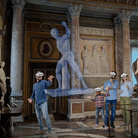 Dal 9 January 2026 al 27 February 2026
Roma | Galleria Borghese
Dal 9 January 2026 al 27 February 2026
Roma | Galleria Borghese
Sguardi oltre il tempo
-
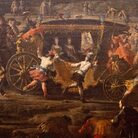 Dal 20 December 2025 al 20 April 2026
Caserta | Reggia di Caserta
Dal 20 December 2025 al 20 April 2026
Caserta | Reggia di Caserta
Regine: trame di cultura e diplomazia tra Napoli e l’Europa
-
 Dal 19 December 2025 al 23 March 2026
Torino | Palazzo Madama - Museo Civico d’Arte Antica
Dal 19 December 2025 al 23 March 2026
Torino | Palazzo Madama - Museo Civico d’Arte Antica
Il castello ritrovato. Palazzo Madama dall’età romana al medioevo
-
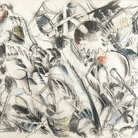 Dal 17 December 2025 al 19 January 2026
Roma | Palazzo della Cancelleria
Dal 17 December 2025 al 19 January 2026
Roma | Palazzo della Cancelleria
De Humana Mensura di Linda Karshan
-
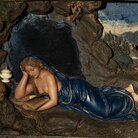 Dal 18 December 2025 al 12 April 2026
Firenze | Gallerie degli Uffizi
Dal 18 December 2025 al 12 April 2026
Firenze | Gallerie degli Uffizi
Cera una volta. Sculture dalle collezioni medicee
-
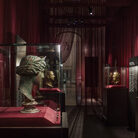 Dal 11 December 2025 al 9 April 2026
Firenze | Museo Archeologico Nazionale di Firenze
Dal 11 December 2025 al 9 April 2026
Firenze | Museo Archeologico Nazionale di Firenze
Icone di Potere e Bellezza
